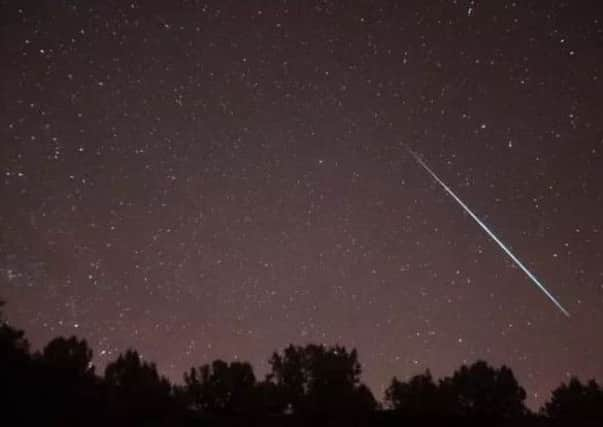Meteor shower set to light up the sky tonight


Named after the Perseus constellation, this annual galactic event takes place every August when “Earth ventures through trails of debris left behind by an ancient comet”, according to NASA.
This year’s Perseid meteor shower will be the debris from the tail of Comet Swift-Tuttle and will give stargazers a glimpse of around 100 meteors, or ‘shooting stars’, an hour.
Advertisement
Hide AdAdvertisement
Hide AdSet to travel through the sky at 132,000 miles per hour in a north-easterly direction, the Perseid meteors can peak at anywhere from 3,000 to 10,000 degrees Fahrenheit as they race through the sky.
“At that speed, even a smidgen of dust makes a vivid streak of light when it collides with Earth’s atmosphere,” says NASA.
But don’t worry about the meteor shower battering earth any time soon as most burn 50 miles above the planet.
It’s set to be a spectacular display of shooting stars, so look up to the sky on the evening of Saturday 12 August for your best chance of witnessing the Perseid meteor shower.
How can I see them
Advertisement
Hide AdAdvertisement
Hide AdTo see the meteor shower, you don’t need a telescope, binoculars or any other equipment.
It’s best to the weather forecast in advance via www.metoffice.gov.uk as the clearer the skies, the more you’ll see - and if there’s heavy cloud, you’ll struggle.
Find a spot away from bright lights and allow time for your eyes to get used to the dark. This usually takes about 15 to 20 minutes - so get comfortable.
If you’re out at night, even in August, the temperature can get quite chilly, so dress accordingly and take extra warm layers even if it doesn’t feel cold when you head out. It’s easy to get cold if you’re waiting around.
Advertisement
Hide AdAdvertisement
Hide AdSleeping bags, blankets and food and drink supplies can all help make for a more comfortable experience while you’re out searching for shooting stars.
The meteors appear randomly everywhere in the sky, so you do not need to look in any particular direction as meteors appear randomly anywhere in the sky - just keep looking up, filling your gaze with as much of the sky as possible for as long as you can.
It may take a little while before you see one, and it’s easy to look away and miss one!